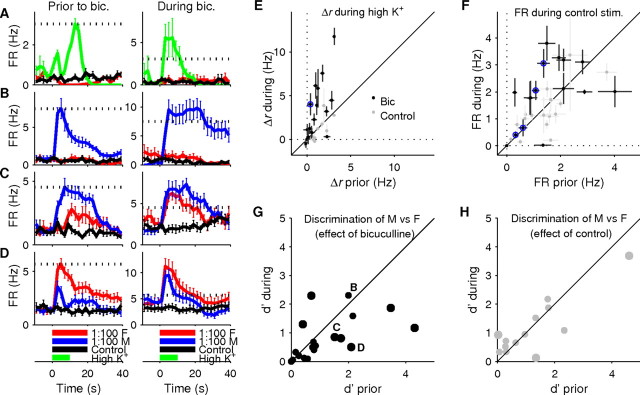Figure 4.
Bicuculline alters the responses and selectivity of AOB neurons. A, PSTHs showing the stimulus responses of a single cell before and during the application of bicuculline. Bicuculline increased the cell's response to high-K+ solution (note change in y-axis scale between left and right), and removed FMU-induced inhibition. B, PSTHs for a cell that was highly selective for MMU before bicuculline application, showing an increase in the response to MMU during drug application without a commensurate increase in the response to FMU. C, D, PSTHs for cells which showed intermediate selectivity for MMU (C) or FMU (D) before the application of bicuculline, showing a significant drop in selectivity during drug application. E, Δr values in response to the presentation of high- K+ solution during versus before the drug period. Each point indicates one cell; black points are cells for which bicuculline was added to the superfusate during the drug period, while gray points are cells for which a negative control was added to the superfusate (see Materials and Methods). Cell highlighted in blue correspond to example cell shown in A. F, Mean firing rates in response to negative control stimulus during versus before the drug period. Cells highlighted in blue correspond to example cells shown in B–D. G, Comparison of d′ before and during application of bicuculline. Each point represents one cell, with statistically significant (p < 0.05) changes in d′ shown with a larger marker. Labels indicate the examples shown in B–D. H, Comparison of d′ before and during mock trials that used only ACSF (negative control).

